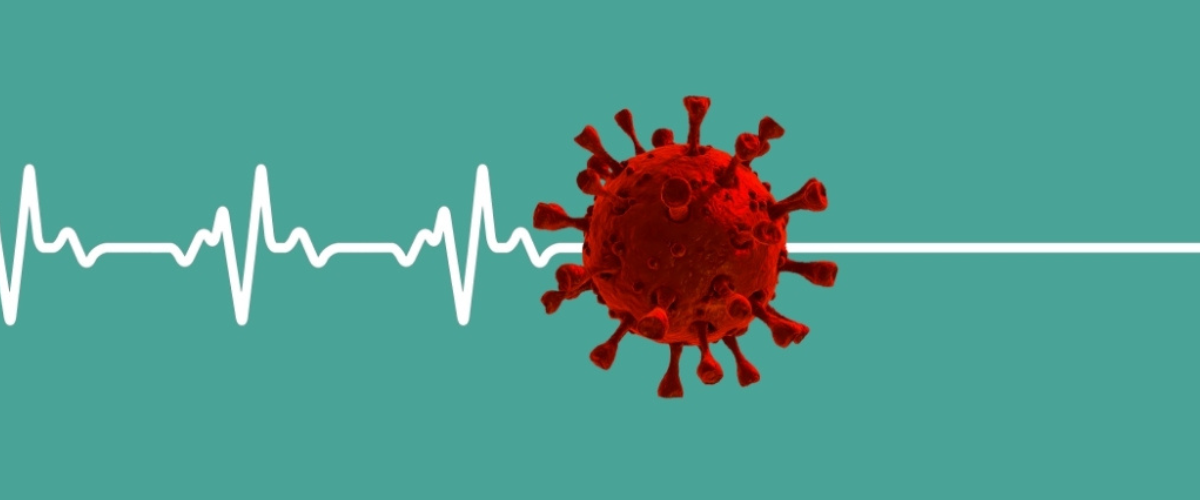| Last updated on November 20, 2023
Healthcare is a lifeline, but it can also be a direct line to infection.
Among the multitude of tolls the COVID-19 pandemic has taken on the provision of healthcare, is the rise of central line-associated bloodstream infections.
CDC’s National Healthcare Safety Network has reported a significant rise in the standard infection ratio for CLABSI: a 47% increase across all location types and a 65% increase in intensive care units (ICUs).
Yet, CLABSIs aren’t inevitable, they’re preventable.
Amongst frontline shortages and an increase in traveling nurses, healthcare workers around the world are doubling down on their efforts to reduce CLABSIs to protect vulnerable patients from a devastating setback (at best), and at worst, a life-threatening infection that results in death.
Among new strategies to prevent CLABSIs, including: renewed practice recommendations, surveillance programs, and upgraded sterilization protocols is the use of CLABSI conscious technology specifically designed to prevent vascular access infections.
By adopting CLABSI conscious technology care providers can minimize human error, maintain safety consistency, save time, money, and ultimately lives.
Key takeaways:
- Each year 28,000 patients in the U.S. die from a CLABSI, and the CDC is reporting a 47% increase in CLABSIs since the outset of the COVID-19 pandemic.
- CLABSIs are preventable, yet the list of prevention practices is already long, including: highly specialized insertion guidelines, sterilization protocols, increased nurse to patient ratios, routine site care, consistent dressing changes, hand hygiene mandates, training toolkits and more.
- Without the right technology in place, CLABSI prevention protocols are compromised among frontline staffing shortages, healthcare worker burnout, and a revolving door of traveling nurses.
- By adopting CLABSI conscious technology designed to protect patients from vascular access infections, healthcare providers can protect patients even during busy times and decreased staffing ratios.
The Cost of CLABSIs
CLABSIs are a type of Hospital Acquired Infection (HAI): an infection that occurs while receiving treatment at a hospital or other health care facility. Common HAIs include pneumonia, C. difficile, urinary tract infections, surgical site infections and CLABSIs.
A CLABSI is a serious infection that occurs when bacteria enters the bloodstream through a patient’s central line.
| 28K | 71% | 47% |
| patients die from CLABSIs annually in the U.S. | of catheter-related infections have been linked to a catheter hub contamination | year over year increase in CLABSI |
A central line is often used for patients that are already facing a significant health challenge such as cancer, kidney dialysis, a heart condition, a life-threatening infection or an illness requiring long-term therapy. The worry of HAIs looms large for these patients who are likely to have a compromised immune system and are already fighting for their health and wellbeing.
Patients deserve their best chance for recovery. Healing shouldn’t hurt, yet HAI’s like CLABSI’s come at a considerable cost.
A single CLABSI affects everyone at the hospital:
- Patients: prolonged hospitalization, setbacks to healing, added discomfort and increased risk of mortality.
- Family members: Heightened worry, stress, prolonged commuting from hospital to home and greater caregiving burden.
- Hospital administration: Additional patient care of up to $96,000 per CLABSI
- The front line: Higher patient to nurse ratios, higher risk of burnout, compromised care delivery.
The financial costs are immense, and the human costs are immeasurable.
Advising the parent of a sick child in the PICU fighting for their life that their child now has a CLABSI is not something that any healthcare provider wants to do.
It’s time to break the CLABSI cycle – because one CLABSI is too many.
A Central Tenet of CLABSI Prevention: CLABSI Conscious Technology
IV therapy as we know it today is now over a century old, and its first applications date back hundreds of years.
Today, intravascular catheters are one of the most commonly inserted medical devices in healthcare.
Yet, not all vascular access technology is created equal, and significant technological advancements have been made to prevent infections, deliver medications safely and improve patient care and comfort.
One of the best CLABSI prevention actions any hospital can take is to add “technology platforms” to their patient safety and quality improvement protocols - a critical CLABSI prevention variable that’s often missing.
“CLABSI prevention protocols can only go so far if the frontline doesn’t have the right technology in their hands.”
- Brian Pedlar, CEO, Covalon.”
Becoming CLABSI conscious means that all healthcare providers need to prioritize the intersections between the patient, technology, care providers, and protocols.
| Patient | Technology |
| Care Providers | Protocols |
CLABSI conscious technology plays a critical role in:
- Preventing human error
- Streamlining workflows
- Supporting CLABSI protocols
- Protecting patients from infections
CLABSI Conscious Technology Checklist
When it comes to choosing CLABSI conscious technology, care providers need to look for:
IV dressings that contain dual-antimicrobial protection with Chlorhexidine and Silver
- Dressings that exceed modern antimicrobial standards on gram positive and gram-negative bacteria and yeast commonly associated with Catheter Related Bloodstream Infections (CRBSIs)
- Dressings made with clear silicone, providing total transparency at and around the insertion site for daily assessment - preventing the need for frequent dressing removals
- Soft silicone adhesive to preserve the skin’s barrier
- Transparent environmental barriers designed to protect line connections from external contaminants
- Line-to-line connection barriers that maintain safe, fast access to hubs while limiting opportunity for error.

Katherine is Senior Director of the Clinical Affairs Department at Covalon Technologies which works directly with clinician, patient, and caregiver stakeholders to offer innovative compassion-driven solutions.




















